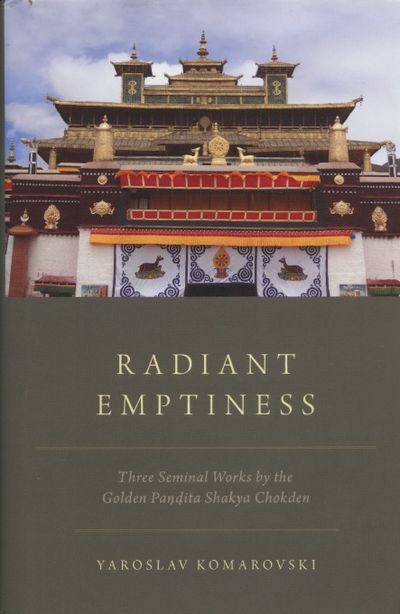- 1. Introduction 1
- 1.1. Starting Points 1
- 1.2. Introducing Shakya Chokden 7
- 1.3. Introducing Shakya Chokden’s Thought 12
- 1.4. Introducing the Texts 21
- 2. Profound Thunder amidst the Clouds of the Ocean of Definitive Meaning: Differentiation of the Two Systems of the Great Madhyamaka Deriving from the
Two Great Chariot Ways 51
- 3. Rain of Ambrosia: Extensive Auto-Commentary on the Treatise That, Explaining Differentiation of the Two Ways of Great Chariots, Establishes the Definitive
Meaning Approved by Them as One 63- 3.1. Setting the Framework of the Meaning through Explaining the General Meaning 65
- 3.1.1. Identification of My Own Opinions 65
- 3.1.2 Extensive Explanation of Scriptural Statements and Reasoning Establishing Them 67
- 3.1.3. Conclusion Reached by Demonstrating the Established Meaning 115
- 3.2. Extensive Explanation of the Meaning of the Words of Individual Textual Passages 134
- 3.2.1. The Meaning of the Treatise’s Title 134
- 3.2.2. The Actual Treatise with That Title 142
- 3.2.3. Providing the Author’s Name in Order to Avoid Confusion with
Other Texts 265
- 3.3. Conclusion upon Generating Respect for the Definitive Meaning of the Third Dharmacakra 266
- 3.3.1. Demonstrating the Way That Definitive Meaning Emerged in Valid Treatises 266
- 3.3.2. Demonstrating That That Same Definitive Meaning Also Emerges from the Texts of Quintessential Instructions by Indian and Tibetan Scholars 271
- 3.3.3. Demonstrating the Transmission Sources I Myself Followed 273
- 3.1. Setting the Framework of the Meaning through Explaining the General Meaning 65
- 4. Great Path of the Ambrosia of Emptiness: Explanation of Profound Pacification Free from Proliferations 281
- 4.1. Identification of the Ambrosia That Flowed from the Excellent Words of Our Compassionate Teacher Alone 282
- 4.2. How Each Group of Proponents of the Buddhist Tenets Partakes in Its Share of the Ambrosia 283
- 4.3. Systems That Having Understood Emptiness Are Posited as the Pinnacle of Tenet Systems 286
- 4.3.1. Determining the Presentation of Emptiness 286
- 4.3.2. Explanation of Divisions of the Path Purifying Stains of the Dharma-Sphere 362
- 4.3.3. Entity of Buddhahood Attained by That Path 387
- English-Tibetan Glossary 393
- Glossary of Tibetan Names 433
- Chapter Outlines 435
- Bibliography 447
- Index 459

